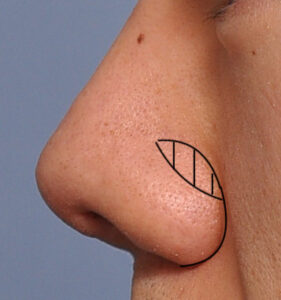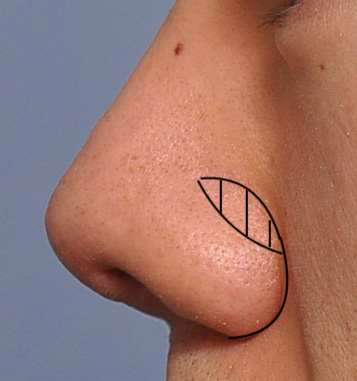The hanging ala is one of the not uncommon nasal tip shape discrepancies seen in some Asian rhinoplasties. Effective techniques for lifting the hanging ala are limited to either direct excision along the alar rim or indirect excision along the alar crease above it. Each method has the issue of adverse scarring potential.

Their findings showed that on the frontal view the mean percentage of alar shortening was around 13% . On the lateral view, the mean percentage of alar shortening was around 20%. The mean frontal-lateral alar shortening was around 7%. Two patients required revision surgery for scars (13%) and another for nostril asymmetry (6%).
Their results showed that this type of hanging alar correction is both safe and effective. The biggest concern would be, of course, how the scars fared. While most of the patients apparently did fine the development of adverse scarring is always possible with the subsequent need for scar revision. Of equal importance is the potential for nasal tip skin compromise when done at the same time as an open rhinoplasty. The lateral nasal artery courses right through the alar crease region usually laying just above the crease line. This would provide some caution for this procedure when combined with an open rhinoplasty although no such complications occurred in this clinical series.
Dr. Barry Eppley
Indianapolis, Indiana



